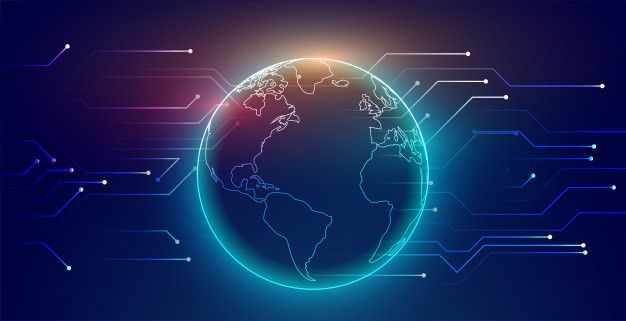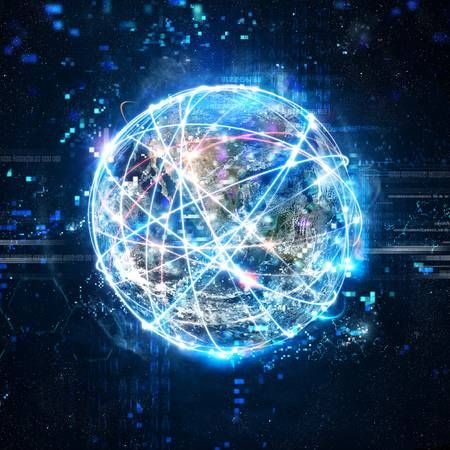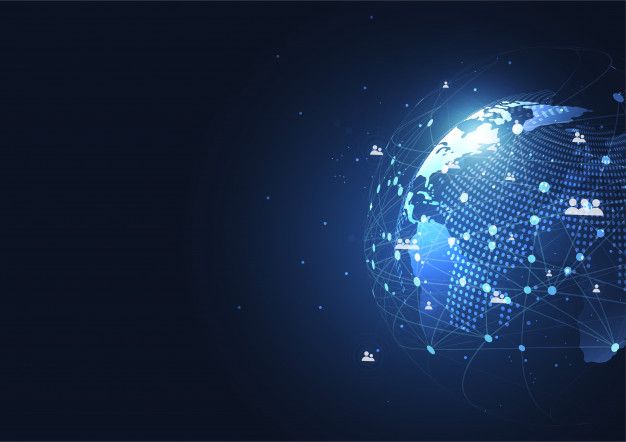In the intricate and ever-accelerating tapestry of the 21st century global economy, few forces are as profoundly transformative and universally impactful as ubiquitous connectivity. More than just access to the internet, it encompasses the seamless flow of information, ideas, and commerce across geographical boundaries, powered by an intricate web of digital infrastructure. This pervasive connectivity acts as the fundamental catalyst, directly fueling economic expansion, fostering innovation, bridging societal divides, and fundamentally reshaping how nations interact and industries operate. It’s the silent, yet powerful, engine that allows ideas to proliferate, businesses to scale globally, and individuals to access unprecedented opportunities, undeniably fueling global growth on an unparalleled scale.
The Evolution of Connectivity: From Telegraph to Terabits
To truly grasp the profound significance of modern connectivity, it’s essential to journey through its historical evolution, understanding how each leap in communication technology has progressively shrunk the world and accelerated economic activity.
A. Early Forms of Long-Distance Communication
Humanity’s initial attempts at long-distance communication were rudimentary, relying on physical transport or visual/auditory signals.
- Smoke Signals and Carrier Pigeons: These provided limited, line-of-sight or point-to-point communication, severely constrained by distance, weather, and message complexity.
- The Pony Express and Ocean Voyages: For physical messages, speed was limited by animal or wind power. Weeks or months could pass for information to travel across continents or oceans, severely hampering trade and coordination.
- Limitations: These methods were slow, unreliable, and could only transmit very limited amounts of information, making rapid global commerce or real-time international collaboration impossible.
B. The Dawn of Electrical Communication
The 19th century ushered in the era of electrical communication, marking the first true revolution in information transmission speed.
- The Telegraph: Invented by Samuel Morse, the telegraph allowed messages to be transmitted almost instantaneously over vast distances using electrical signals and Morse code. This was a game-changer for news, finance, and military communications. It dramatically shortened the time it took for information to cross continents.
- Submarine Telegraph Cables: The laying of transatlantic telegraph cables in the mid-19th century created the first truly global communication network. This directly facilitated international trade and financial markets by enabling near real-time communication between continents.
- Limitations: Despite its speed, the telegraph was expensive, limited to text messages, and required specialized infrastructure and trained operators. It wasn’t accessible to the average person or small business.
C. The Rise of Telephony and Broadcasting
The late 19th and early 20th centuries saw the emergence of voice communication and mass media.
- The Telephone: Alexander Graham Bell’s invention allowed for real-time voice communication, adding a layer of personal interaction missing from the telegraph. As networks expanded, businesses could coordinate more effectively over distances.
- Radio Broadcasting: Radio enabled mass communication, disseminating news, entertainment, and information to vast audiences simultaneously. This fostered cultural exchange and standardized information dissemination.
- Television: Adding visuals to broadcasting, television further revolutionized mass communication, impacting everything from advertising to political discourse.
- Limitations: Telephony remained primarily point-to-point and expensive for international calls. Broadcasting was one-way, lacking interactivity, and controlled by a few central entities.
D. The Digital Revolution and the Internet Age
The late 20th century witnessed the most profound shift, transforming communication into a ubiquitous, interactive, and digital phenomenon.
- Personal Computers and Networking: The proliferation of personal computers combined with local area networks (LANs) laid the groundwork for interconnected digital systems.
- The Internet: The birth of the internet fundamentally changed global connectivity. It provided a universal, open platform for information exchange, initially text-based, then evolving to multimedia. This was the true catalyst for globalization as we know it today.
- World Wide Web: The invention of the World Wide Web provided an easy-to-use interface for navigating the internet, making it accessible to a non-technical audience.
- Broadband and Mobile Connectivity: The widespread adoption of broadband internet and mobile networks (2G, 3G, 4G, 5G) pushed connectivity beyond desktop computers into our pockets, making it omnipresent and always-on.
- Democratization of Information: The internet democratized access to information and enabled peer-to-peer communication on a global scale, breaking down traditional gatekeepers.
Each of these evolutionary stages built upon the last, progressively fueling economic integration and setting the stage for the profound impact of modern digital connectivity.
Core Pillars of Modern Global Connectivity
Today’s connectivity is built upon a complex interplay of physical infrastructure, digital technologies, and strategic policy. Understanding these pillars is key to recognizing its economic power.
A. Ubiquitous Internet Infrastructure
The backbone of global connectivity is the vast and ever-expanding internet infrastructure.
- Fiber Optic Cables: Thousands of kilometers of undersea and terrestrial fiber optic cables form the high-capacity superhighways for data, transmitting information at near light speed across continents and oceans. These are the physical arteries of the digital economy.
- Data Centers: Massive, highly secure facilities that house the servers, storage, and networking equipment necessary to power the internet, cloud computing, and digital services. Their geographical distribution and interconnectedness are crucial for global reach and low latency.
- Internet Exchange Points (IXPs): Physical locations where different internet service providers (ISPs) and content delivery networks (CDNs) directly exchange internet traffic. IXPs are critical for reducing costs and improving the efficiency and speed of internet communication.
- Satellite Internet: Emerging technologies like Low Earth Orbit (LEO) satellite constellations (e.g., Starlink, OneWeb) promise to deliver broadband internet access to remote and underserved areas globally, extending connectivity to places previously beyond reach.
B. Wireless Technologies and Mobile Networks
Mobile connectivity has made internet access ubiquitous, transforming personal and business communication.
- 4G/LTE Networks: Provided the speed and capacity for widespread mobile internet usage, enabling smartphones to become primary computing devices for billions.
- 5G Networks: The latest generation offers significantly higher speeds, ultra-low latency, and massive connection density, enabling new applications like IoT, autonomous vehicles, and enhanced mobile broadband, further boosting economic activity.
- Wi-Fi and Local Area Networks: Essential for high-speed, localized internet access in homes, offices, and public spaces, complementing cellular networks.
C. Cloud Computing and Edge Computing
These computing paradigms are intrinsically linked to, and enable, global connectivity’s economic impact.
- Cloud Computing: By hosting applications and data in globally distributed data centers, cloud computing allows businesses to scale rapidly, access powerful computing resources on demand, and serve customers worldwide without building their own extensive physical infrastructure. It democratizes access to high-end IT.
- Edge Computing: The growing need for real-time processing and reduced latency (e.g., for IoT, AI, autonomous systems) is pushing computation closer to the data source, at the ‘edge’ of the network. This complements cloud computing by optimizing data flow and enabling instant decision-making in distributed environments.
D. Software and Application Layer
Beyond the physical infrastructure, the software and applications built upon it are what translate connectivity into tangible economic value.
- E-commerce Platforms: Websites and mobile apps that enable online buying and selling of goods and services on a global scale, dissolving geographical trade barriers for businesses and consumers.
- Collaboration Tools: Software for remote work, video conferencing, project management, and shared document editing allows geographically dispersed teams to work together seamlessly, fostering global talent pools.
- Fintech Solutions: Digital payment systems, online banking, and blockchain-based financial services facilitate faster, cheaper, and more secure financial transactions across borders, essential for international trade and investment.
- AI and Big Data Analytics: Connectivity provides the raw data for AI and big data analytics, which in turn drive efficiency, innovation, and new business models across all sectors.
These interconnected pillars create a robust ecosystem that drives economic activity and fosters unprecedented levels of global interaction.
How Connectivity Directly Fuels Global Economic Growth
The pervasive nature of modern connectivity translates into powerful economic benefits that ripple across industries, nations, and individual lives.
A. Democratizing Access to Markets and Opportunities
Connectivity fundamentally levels the playing field, providing unprecedented access to markets and opportunities that were once exclusive.
- Global Reach for SMEs: Small and Medium-sized Enterprises (SMEs) can now reach global customers through e-commerce platforms and online marketing, bypassing traditional barriers to international trade (e.g., physical presence, complex distribution networks). This significantly expands their market size and growth potential.
- New Export Opportunities for Developing Nations: Countries with developing economies can leverage digital platforms to export goods and services (e.g., handicrafts, digital services like freelancing, remote customer support) to wealthier markets, diversifying their economies and creating new revenue streams.
- Access to Global Talent Pools: Businesses can hire talent from anywhere in the world, reducing labor costs, finding specialized skills, and fostering diverse, global teams, leading to increased innovation and productivity.
- Remote Work Revolution: The ability to work remotely, enabled by connectivity, is reshaping labor markets, reducing geographical constraints for employment, and improving work-life balance for many.
B. Driving Innovation and Knowledge Sharing
The seamless flow of information and ideas is a direct catalyst for innovation.
- Accelerated Research and Development: Researchers globally can collaborate in real-time, share data, and access vast online knowledge bases, accelerating scientific discovery and technological innovation (e.g., collaborative efforts on vaccine development).
- Open Source Collaboration: Developers worldwide can contribute to and leverage open-source projects, collectively building sophisticated software tools and platforms at a pace impossible for isolated teams.
- Skill Development and Online Education: Individuals can access online courses, tutorials, and certifications from top institutions globally, regardless of their physical location or socioeconomic background. This upskills workforces and creates a more knowledgeable global talent pool.
- Rapid Idea Diffusion: New business models, technological concepts, and best practices can spread globally almost instantaneously, fostering a dynamic environment of competitive innovation.
C. Enhancing Efficiency and Productivity Across Sectors
Connectivity enables smarter, more efficient operations across virtually every industry.
- Optimized Supply Chains: Real-time data from connected devices (IoT) allows for precise tracking of goods, predictive maintenance of logistics equipment, and dynamic rerouting to avoid delays, making global supply chains more efficient and resilient.
- Automated Processes: Connectivity is fundamental to the rise of Industry 4.0, enabling smart factories where machines communicate, processes are automated, and production is optimized through real-time data analysis.
- Digital Payments and Financial Inclusion: Instant, low-cost digital payment systems bypass traditional banking infrastructure, enabling financial transactions for the unbanked in developing countries and speeding up cross-border payments for businesses, driving financial inclusion and economic activity.
- Precision Agriculture: Connected sensors and drones provide real-time data on soil conditions, crop health, and weather, allowing farmers to optimize irrigation, fertilization, and pest control, increasing yields and reducing waste.
D. Fostering Global Trade and Investment
Connectivity directly facilitates the mechanics of international trade and investment.
- Reduced Transaction Costs: Digital communication reduces the costs associated with international trade, such as finding trading partners, negotiating contracts, and processing documentation.
- Increased Transparency: Online platforms and data sharing can increase transparency in international markets, reducing information asymmetries and fostering trust between trading partners.
- Cross-Border Investment: Investors can access real-time market data and execute trades globally, leading to more fluid capital flows and foreign direct investment. Fintech platforms further simplify international investment.
- Integrated Global Markets: Connectivity leads to the deeper integration of global financial markets, allowing for more efficient capital allocation worldwide.
E. Supporting Economic Resilience and Crisis Response
In times of crisis, robust connectivity proves invaluable for economic stability and recovery.
- Business Continuity: During pandemics or natural disasters, strong internet connectivity enables remote work and online operations, allowing many businesses to maintain continuity and mitigate economic disruption.
- Disaster Response and Aid Coordination: Real-time communication and data sharing facilitate faster and more coordinated disaster relief efforts, minimizing economic damage and saving lives.
- Market Adaptability: Businesses can quickly pivot to online sales channels or remote service delivery when traditional avenues are disrupted, demonstrating economic adaptability fueled by connectivity.
- Access to Critical Information: During crises, connectivity ensures that populations have access to vital public health information, government directives, and emergency services, fostering social stability and economic recovery.
Challenges and Considerations in Expanding Global Connectivity
Despite its undeniable benefits, the expansion and optimization of global connectivity face significant hurdles that must be addressed to ensure equitable and sustainable growth.
A. The Digital Divide
Despite progress, a significant portion of the global population still lacks reliable and affordable internet access. This digital divide perpetuates inequalities.
- Infrastructure Gaps: Many rural and remote areas, particularly in developing countries, lack the necessary physical infrastructure (fiber, cell towers) due to high deployment costs and low potential returns for private companies.
- Affordability: Even where infrastructure exists, the cost of internet services, devices, and electricity can be prohibitively expensive for low-income populations, rendering connectivity inaccessible.
- Digital Literacy: Lack of skills or understanding on how to use digital tools effectively prevents individuals from fully leveraging the benefits of connectivity, even if access is available.
- Exacerbating Existing Inequalities: Without equitable access, the digital divide can widen the gap between those who benefit from the connected economy and those who are left behind, impacting education, employment, and social mobility.
B. Cybersecurity Threats and Data Privacy
The interconnected nature of global networks inherently creates vulnerabilities.
- Increased Attack Surface: More connected devices and systems mean a larger attack surface for cybercriminals, state-sponsored actors, and other malicious entities.
- Sophisticated Cyberattacks: Ransomware, phishing, data breaches, and state-sponsored cyber warfare pose existential threats to businesses, critical infrastructure, and national security, causing immense economic damage.
- Data Privacy Concerns: The vast amounts of data collected and transmitted across networks raise significant concerns about individual privacy, corporate espionage, and misuse of personal information, necessitating robust regulatory frameworks like GDPR.
- Trust in Digital Systems: Widespread cybersecurity incidents can erode public trust in digital systems, hindering adoption of new technologies and slowing economic progress.
C. Geopolitical Tensions and Digital Sovereignty
Connectivity, while enabling collaboration, also becomes a vector for geopolitical competition.
- Internet Fragmentation (Splinternet): Growing nationalistic tendencies and security concerns are leading some countries to seek greater control over their internet infrastructure, data, and digital services, potentially leading to a fragmented global internet.
- Cyber Espionage and Warfare: Nations engage in cyber espionage for economic advantage and develop cyber warfare capabilities, using connectivity as a battleground.
- Supply Chain Dependencies: Reliance on foreign suppliers for critical digital infrastructure components (e.g., semiconductors, networking equipment) creates geopolitical vulnerabilities and drives efforts towards supply chain de-risking and reshoring.
- Censorship and Information Control: Authoritarian regimes use connectivity to control information flows, censor dissent, and monitor citizens, raising human rights concerns and impacting free trade of ideas.
D. Regulatory Harmonization and Governance Gaps
The global nature of connectivity often outpaces national regulatory frameworks.
- Conflicting Regulations: Different countries have varying regulations on data privacy, e-commerce, content moderation, and taxation, creating complexities for businesses operating globally.
- Lack of Global Governance: There is no single, universally accepted global governance body for the internet, leading to fragmented efforts and difficulties in addressing cross-border issues like cybercrime, content disputes, and digital taxation.
- Antitrust and Monopoly Concerns: The increasing dominance of a few large tech companies in the digital space raises concerns about monopolies, unfair competition, and the need for international antitrust coordination.
E. Environmental Impact of Digital Infrastructure
The vast and growing digital infrastructure has a significant environmental footprint.
- Energy Consumption: Data centers consume immense amounts of electricity, contributing to carbon emissions, especially if powered by non-renewable sources.
- E-Waste: The rapid upgrade cycle of electronic devices and infrastructure generates large volumes of electronic waste, which often contains hazardous materials and poses disposal challenges.
- Resource Depletion: Manufacturing digital devices and infrastructure requires significant amounts of rare earth minerals and other natural resources, raising concerns about their sustainable extraction and supply.
The Future Trajectory: Towards a More Connected and Equitable World
Despite the challenges, the trajectory for global connectivity is towards greater reach, higher speeds, and deeper integration, driven by a continuous quest for economic growth and societal progress.
A. Universal Broadband Access (Satellites & Public-Private Partnerships)
The drive to close the digital divide will accelerate, pushing for universal broadband access.
- LEO Satellite Constellations: As mentioned, constellations like Starlink will provide global internet access, reaching remote areas where terrestrial infrastructure is too costly.
- Public-Private Partnerships: Governments and private companies will increasingly collaborate to fund and deploy infrastructure in underserved regions, leveraging subsidies, regulatory incentives, and innovative deployment models.
- Affordability Initiatives: Programs to reduce the cost of devices, provide public Wi-Fi hotspots, and offer subsidized internet access for low-income households will expand globally.
B. Enhanced Cybersecurity and Trust Frameworks
As connectivity deepens, so will the focus on securing it.
- AI-Powered Security: AI and machine learning will be increasingly used for real-time threat detection, anomaly identification, and automated response to cyberattacks, moving towards more proactive defense mechanisms.
- Zero-Trust Architectures: Widespread adoption of zero-trust models, assuming no inherent trust and requiring strict verification for every access request, even within internal networks.
- International Cooperation: Governments and private sector organizations will enhance international cooperation on cybersecurity information sharing, threat intelligence, and coordinated responses to global cybercrime.
- Decentralized Identity and Privacy Tools: Blockchain-based identity solutions and privacy-enhancing technologies will empower individuals with greater control over their personal data.
C. The Metaverse and Immersive Connectivity
The emergence of the Metaverse will push the boundaries of connectivity, demanding even higher bandwidth and lower latency.
- Persistent Virtual Worlds: Building persistent, interconnected 3D virtual worlds will require massive computational power and real-time data synchronization across globally distributed users.
- Augmented and Virtual Reality: The widespread adoption of AR/VR devices will necessitate extremely low-latency networks to deliver seamless, immersive experiences without motion sickness or disassociation.
- New Economic Opportunities: The metaverse promises new avenues for commerce, entertainment, education, and work, creating entirely new industries and economic activities that depend on sophisticated connectivity.
D. Sustainable Digital Infrastructure
Growing environmental concerns will drive a focus on sustainable digital infrastructure.
- Green Data Centers: Increased investment in energy-efficient data center designs, renewable energy sources, and innovative cooling technologies.
- Circular Economy for Electronics: Initiatives to promote the recycling, reuse, and repair of electronic devices and network equipment, reducing e-waste and resource depletion.
- Energy-Efficient Protocols and Devices: Development of more energy-efficient networking protocols and lower-power consumption devices to reduce the overall energy footprint of the internet.
E. Digital Public Goods and Open-Source Collaboration
There will be a growing emphasis on viewing connectivity and fundamental digital infrastructure as public goods.
- Open Source Hardware and Software: Increased investment and collaboration in open-source projects for networking equipment, operating systems, and core internet protocols to foster greater transparency, security, and global access.
- Digital Inclusion Policies: Governments and international organizations will implement policies specifically aimed at ensuring equitable access, digital literacy, and the benefits of the digital economy for all citizens.
F. Hyper-Connected Industries (Industry 5.0)
Beyond Industry 4.0’s automation, Industry 5.0 will focus on human-robot collaboration and the personalization of mass production, all enabled by pervasive connectivity.
- Human-Robot Collaboration: Highly responsive networks will allow robots and humans to work seamlessly and safely together on factory floors and beyond.
- Personalized Manufacturing: Real-time customer data transmitted via high-speed networks will enable on-demand, highly customized production at scale.
- Smart Supply Chains: End-to-end digital visibility and automated decision-making across global supply chains will create unprecedented levels of efficiency and resilience.
Conclusion
In the grand narrative of global progress, connectivity stands as a paramount force, unequivocally fueling global growth. From the rudimentary signals of antiquity to the instantaneous terabits of fiber optics, each technological leap has compressed time and space, enabling unprecedented levels of economic activity, cultural exchange, and human collaboration. Today, pervasive digital connectivity is the invisible yet indispensable infrastructure that democratizes access to markets, accelerates innovation, enhances productivity across every sector, and fosters a more integrated global economy.
While the journey towards truly universal and secure connectivity is fraught with significant challenges—including the persistent digital divide, escalating cybersecurity threats, and complex geopolitical tensions—the imperative for a more connected world remains undeniable. The future trajectory promises universal broadband through satellite constellations, hyper-secure digital ecosystems powered by AI, immersive experiences within the metaverse, and a conscious drive towards sustainable digital infrastructure. As nations and industries navigate these evolving currents, strategic investments in robust, equitable, and secure connectivity will not merely be an economic choice; they will be the defining blueprint for inclusive prosperity and a truly interconnected global future. The power of connectivity to unleash boundless potential is not just a promise; it’s being unveiled and leveraged, right now.














